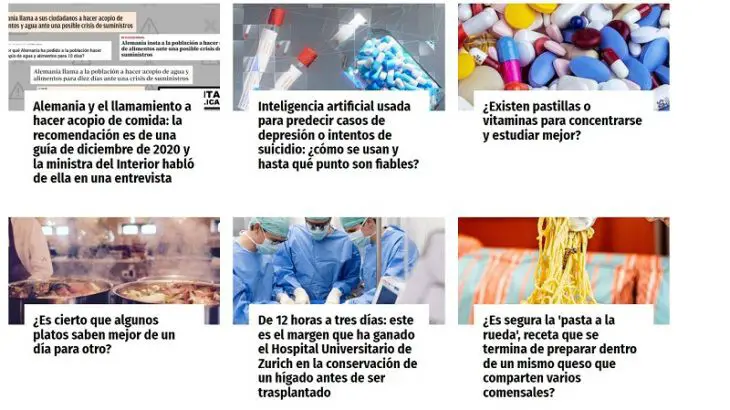Fake news is a problem in today's society, and has been for years. Already in 2017, the I Study on the impact of fake news in Spain said that 8 out of 10 Spaniards do not know how to distinguish true news from a hoax. In 2020, in the midst of the coronavirus pandemic, a survey by the Organization of Consumers and Users concluded that 68% of those asked considered that false information endangers democracy. It is for all this that the tools to detect fake news are so necessary today..
Index
Be attentive to the medium that publishes the news
Beware of parodies
Watch the sources
It is advisable to read the entire news
Useful tools against hoaxes
Search for information on Google
Pay attention to the medium that publishes the news

When you read news, the first thing you have to do is see which medium publishes it . Usually, if it's from a well-known outlet, it's probably real news. However, be wary of those pages that generate doubts or suspicions, especially if the headline is very striking or directly exaggerated.
beware of parodies
Media such as El Mundo Today examine current affairs through parody news that, on occasion, can pass for real: they have all the elements of a written journalistic text, they are structured like news, and the language they use is informative. But it's just a very well crafted mockery. The mythical magazine Thursday is another weekly that has fake news sections for humorous purposes.
watch the sources
Any news must be based on real and reliable sources. For example: sometimes we see how words are put into the mouth of a politician that later turn out to be a lie, or are taken out of context in the best of cases. In an informative text, everything must be related to a particular origin: a study, a quote, an event... Everything must be referenced. Be suspicious of statements that are not dated or published in any other medium with which you can check them. And, of course, doubt any information that is shared with you on WhatsApp : they are usually message chains that cause social alarm, almost always for ideological purposes.
It is convenient to read everything to detect fake news
As we mentioned before, if the headline has caught your attention too much, seems very sensational or exaggerated , it is probably clickbait : a 'bait' for you to click on the false news. Do not trust headlines such as "You will not believe what Fulanito has said", "This was the last zasca from Menganito to Zutanito", because they tend to hyperbolize the information -as is later shown in the development of it-, or directly lie. In addition, they fail to comply with the journalistic maxim of telling the essentials of the news in the headline.
Tools to detect fake news
Apart from these guidelines, there are several journalistic websites in Spain that focus on finding and verifying information. One of the pioneers is maldita.es, with a special focus on fake news spread on social networks. Another, the VerificaRTVE public radio and television platform.

Search for information on Google
If the news we are reading is false, surely other media have echoed the hoax. Therefore, it is interesting to look for information about the owner on the internet to confirm it..
Cover image | Ashni
Inside Image | Roman Kraft